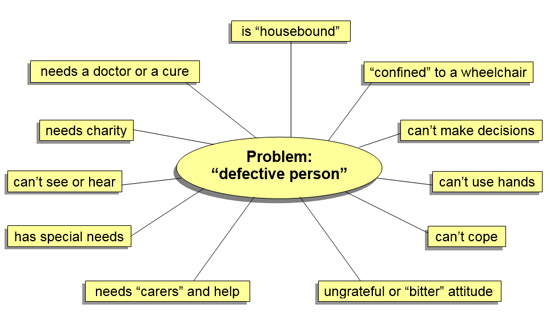the Medical Model of Disability” is a way of explaining how some people and organisations understand disability and how disabled people are treated but is not considered to be an inclusive approach to disabled people.
This explains ways in which disabled people are stereotyped or judged, when a person is placed at the centre as the “problem”. The person is considered “defective”, “different” or “not normal” and is often described or believed to be:
- “housebound” and/or
- “confined” to a wheelchair and/or
- unable to make decisions and/or
- can’t use hands, feet, other parts of the body and/or
- can’t see or hear and/or
- can’t cope and/or
- having an ungrateful or “bitter” attitude and/or
- having “special needs” and/or
- in need of a doctor or a cure and/or
- needing charity and/or
- needing sympathy and/or
- always needing help.

Much of this language is very negative and does not really describe the experience of disabled people. All of us in society need a doctor and all kinds of help at different times throughout our lives but many people, especially many professionals believe that they “know best”, do not always treat disabled people with respect, don’t listen to their views and experience and don’t consider discussing options and decisions directly with them.
For more information, training, and discussions around these issues, contact your local disabled people’s group or contact us at admin@mdpag.org.uk
Acknowledgements: This version of the medical model of disability has been adapted from models developed by Unison NW and Pam Thomas.